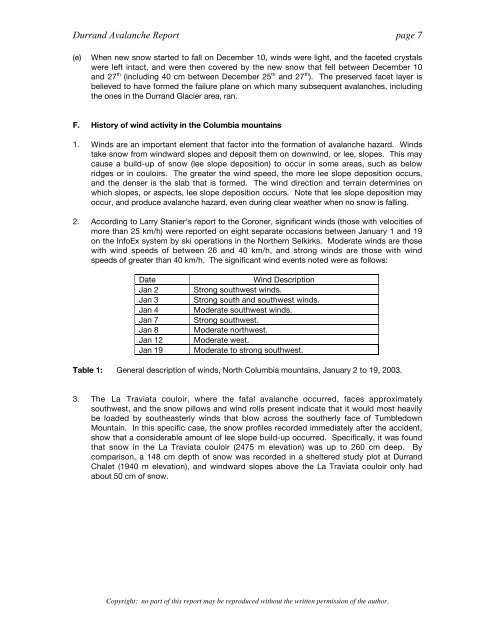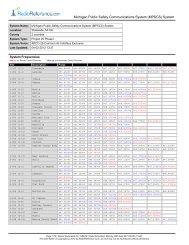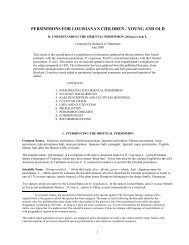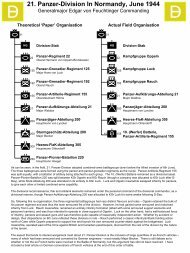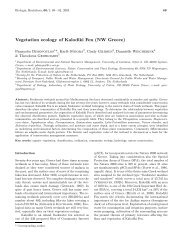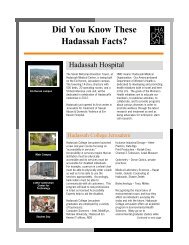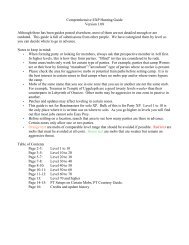Analysis of the Durrand Glacier Avalanche Accident
Analysis of the Durrand Glacier Avalanche Accident
Analysis of the Durrand Glacier Avalanche Accident
Create successful ePaper yourself
Turn your PDF publications into a flip-book with our unique Google optimized e-Paper software.
<strong>Durrand</strong> <strong>Avalanche</strong> Report page 7<br />
(e) When new snow started to fall on December 10, winds were light, and <strong>the</strong> faceted crystals<br />
were left intact, and were <strong>the</strong>n covered by <strong>the</strong> new snow that fell between December 10<br />
and 27 th (including 40 cm between December 25 th and 27 th ). The preserved facet layer is<br />
believed to have formed <strong>the</strong> failure plane on which many subsequent avalanches, including<br />
<strong>the</strong> ones in <strong>the</strong> <strong>Durrand</strong> <strong>Glacier</strong> area, ran.<br />
F. History <strong>of</strong> wind activity in <strong>the</strong> Columbia mountains<br />
1. Winds are an important element that factor into <strong>the</strong> formation <strong>of</strong> avalanche hazard. Winds<br />
take snow from windward slopes and deposit <strong>the</strong>m on downwind, or lee, slopes. This may<br />
cause a build-up <strong>of</strong> snow (lee slope deposition) to occur in some areas, such as below<br />
ridges or in couloirs. The greater <strong>the</strong> wind speed, <strong>the</strong> more lee slope deposition occurs,<br />
and <strong>the</strong> denser is <strong>the</strong> slab that is formed. The wind direction and terrain determines on<br />
which slopes, or aspects, lee slope deposition occurs. Note that lee slope deposition may<br />
occur, and produce avalanche hazard, even during clear wea<strong>the</strong>r when no snow is falling.<br />
2. According to Larry Stanier’s report to <strong>the</strong> Coroner, significant winds (those with velocities <strong>of</strong><br />
more than 25 km/h) were reported on eight separate occasions between January 1 and 19<br />
on <strong>the</strong> InfoEx system by ski operations in <strong>the</strong> Nor<strong>the</strong>rn Selkirks. Moderate winds are those<br />
with wind speeds <strong>of</strong> between 26 and 40 km/h, and strong winds are those with wind<br />
speeds <strong>of</strong> greater than 40 km/h. The significant wind events noted were as follows:<br />
Date Wind Description<br />
Jan 2 Strong southwest winds.<br />
Jan 3 Strong south and southwest winds.<br />
Jan 4 Moderate southwest winds.<br />
Jan 7 Strong southwest.<br />
Jan 8 Moderate northwest.<br />
Jan 12 Moderate west.<br />
Jan 19 Moderate to strong southwest.<br />
Table 1: General description <strong>of</strong> winds, North Columbia mountains, January 2 to 19, 2003.<br />
3. The La Traviata couloir, where <strong>the</strong> fatal avalanche occurred, faces approximately<br />
southwest, and <strong>the</strong> snow pillows and wind rolls present indicate that it would most heavily<br />
be loaded by sou<strong>the</strong>asterly winds that blow across <strong>the</strong> sou<strong>the</strong>rly face <strong>of</strong> Tumbledown<br />
Mountain. In this specific case, <strong>the</strong> snow pr<strong>of</strong>iles recorded immediately after <strong>the</strong> accident,<br />
show that a considerable amount <strong>of</strong> lee slope build-up occurred. Specifically, it was found<br />
that snow in <strong>the</strong> La Traviata couloir (2475 m elevation) was up to 260 cm deep. By<br />
comparison, a 148 cm depth <strong>of</strong> snow was recorded in a sheltered study plot at <strong>Durrand</strong><br />
Chalet (1940 m elevation), and windward slopes above <strong>the</strong> La Traviata couloir only had<br />
about 50 cm <strong>of</strong> snow.<br />
Copyright: no part <strong>of</strong> this report may be reproduced without <strong>the</strong> written permission <strong>of</strong> <strong>the</strong> author.


